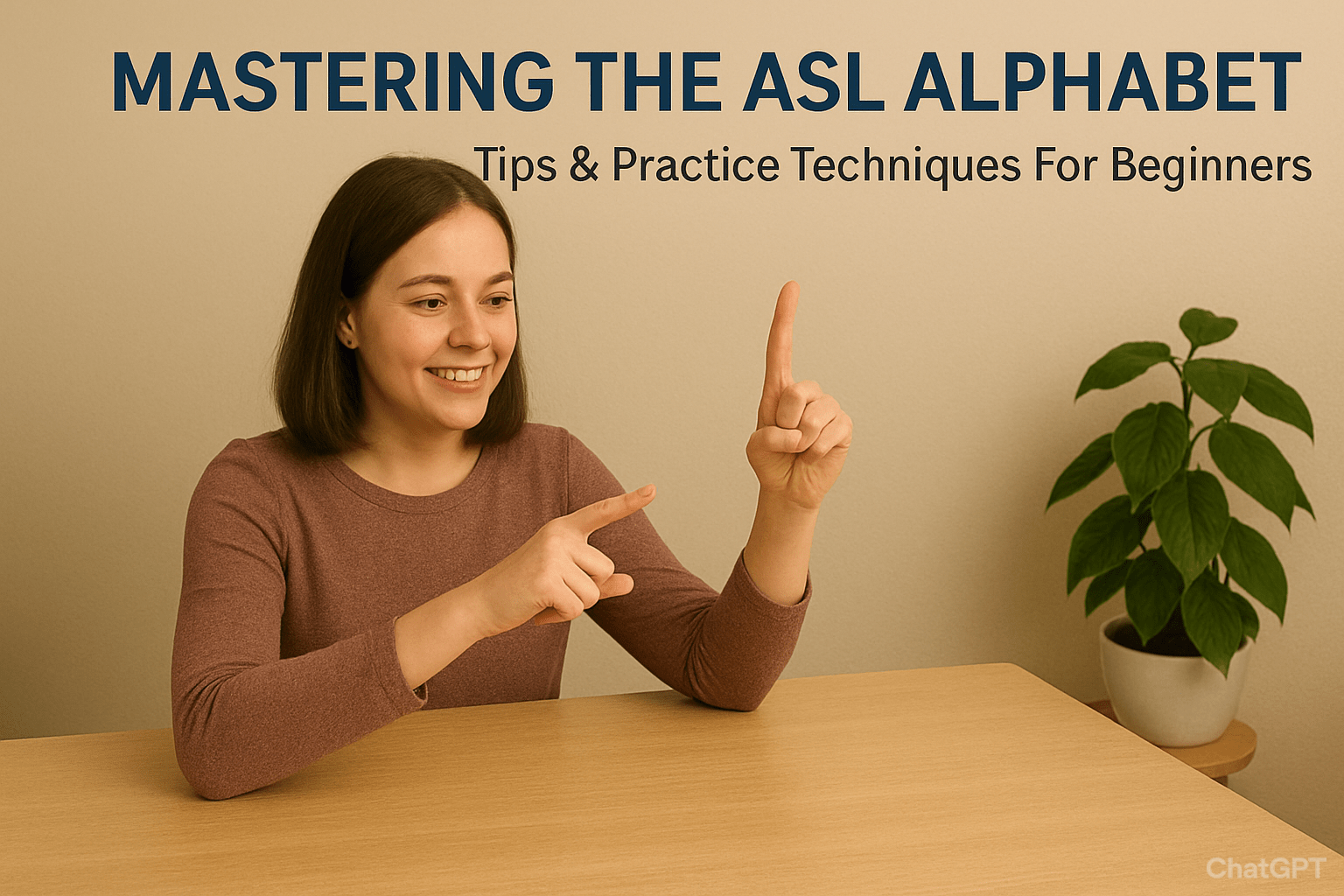When you’re learning sign language for the first time, it’s easy to feel overwhelmed by the number of signs to memorize. But here’s the good news — you don’t have to learn everything at once.
Starting with everyday sign vocabulary — the signs you’ll use most often — makes learning natural and fun. These are the gestures you’ll use to greet people, talk about your day, ask for food, or describe your family.
Think of it as building a foundation for fluency — one meaningful conversation at a time.
1. Greetings and Introductions
Let’s start where every conversation begins — hellos and goodbyes. These are some of the first signs that make your interactions warm and personal.
Common greeting signs include:
- Hello – A simple wave near the side of your head.
- Good morning / Good night – Combine the sign for “good” with “morning” or “night.”
- How are you? – Point to yourself, then move your hands outward in a questioning gesture.
- Thank you and Please – Essential for politeness and daily use.
👉 Tip: Practice these signs in front of a mirror daily. Repetition builds muscle memory — your hands will “remember” even before your brain does.
2. Family and Relationships
Family signs are emotionally meaningful and easy to learn because they’re connected to people you love.
Some essential family signs are:
- Mother / Father – Touch your thumb to your chin for “mother” and to your forehead for “father.”
- Brother / Sister – Use a “G” handshape to show the relationship between siblings.
- Son / Daughter – Combine the sign for “male/female” with “baby.”
- Friend – Link your index fingers together in a gentle twist — a beautiful gesture of connection.
💡 Pro tip: Create flashcards with photos of your family members and the matching signs. This helps anchor the vocabulary in real life.
3. Food and Drinks
You can’t have daily conversations without talking about food!
Here are some of the most used signs:
- Eat / Food – Tap your fingertips together to your mouth.
- Water – Form a “W” with your hand and tap your chin.
- Tea / Coffee – Mimic stirring a cup for “tea” or grinding coffee beans for “coffee.”
- Rice / Bread / Milk – Simple, everyday foods that are easy to remember through gesture associations.
If you’re learning Indian Sign Language, you can explore detailed examples in our ISL Dictionary.
4. Common Actions and Verbs
Once you’ve mastered basic nouns, it’s time to add some action! These signs help you express what you do every day.
Try learning:
- Go / Come – Point forward or inward depending on direction.
- Work / Study – Tap your fists together for “work”; move your hand back and forth near your forehead for “study.”
- Sleep / Wake up – Close your eyes while lowering your hand for “sleep,” then open them wide for “wake up.”
- Love / Like – Cross your arms for “love”; touch your chest and move your hand outward for “like.”
❤️ Tip: Pair each sign with a real action during your day. For example, sign “eat” before meals or “sleep” before bedtime. This creates natural memory links.
5. Emotions and Feelings
Communicating emotions is a big part of any language. Whether you’re happy, sad, tired, or excited, knowing these signs helps others understand you better — even without words.
A few key emotion signs:
- Happy / Sad – Move your open hand upward from your chest for “happy” and downward for “sad.”
- Tired / Angry / Scared – Each has a distinct hand and facial expression — facial cues are just as important as hand movements.
- Fine / Okay / Sorry – Polite, everyday responses that make conversations smoother.
🎭 Practice tip: Mirror your face expressions as you sign. Facial expressions are essential in sign language — they add tone, emotion, and clarity.
6. Time and Everyday Routines
Learning to talk about when something happens brings structure to your conversations.
Some useful time-related signs:
- Today / Tomorrow / Yesterday – Move your thumb from your chin to indicate direction in time.
- Morning / Afternoon / Night – Use gestures that mimic the sun’s position.
- Now / Later / Always – Great for daily planning and small talk.
- Work / School / Home – Signs that fit naturally into your everyday schedule.
If you’re still learning the alphabet, check out our article on Mastering the ASL Alphabet: Tips & Practice Techniques — it will help you spell out new words while you expand your vocabulary.
7. Practice Makes Progress
The secret to mastering everyday sign vocabulary is consistent practice — not perfection.
Here’s how you can stay motivated:
- Sign in the mirror – Great for refining movements.
- Record yourself – Helps you track progress over time.
- Use real conversations – Practice with a friend, family member, or an online signing buddy.
- Explore free learning resources – You can find many free videos and lessons on SignAcademy.org.
Conclusion: Start Small, Sign Often
Fluency in sign language isn’t built overnight — it’s built one sign, one smile, and one conversation at a time.
Start with these everyday signs, use them daily, and soon you’ll find yourself signing without even thinking. And when you’re ready, dive deeper into our sign dictionary to keep expanding your vocabulary.
Because every sign you learn is a step closer to meaningful, barrier-free communication.


